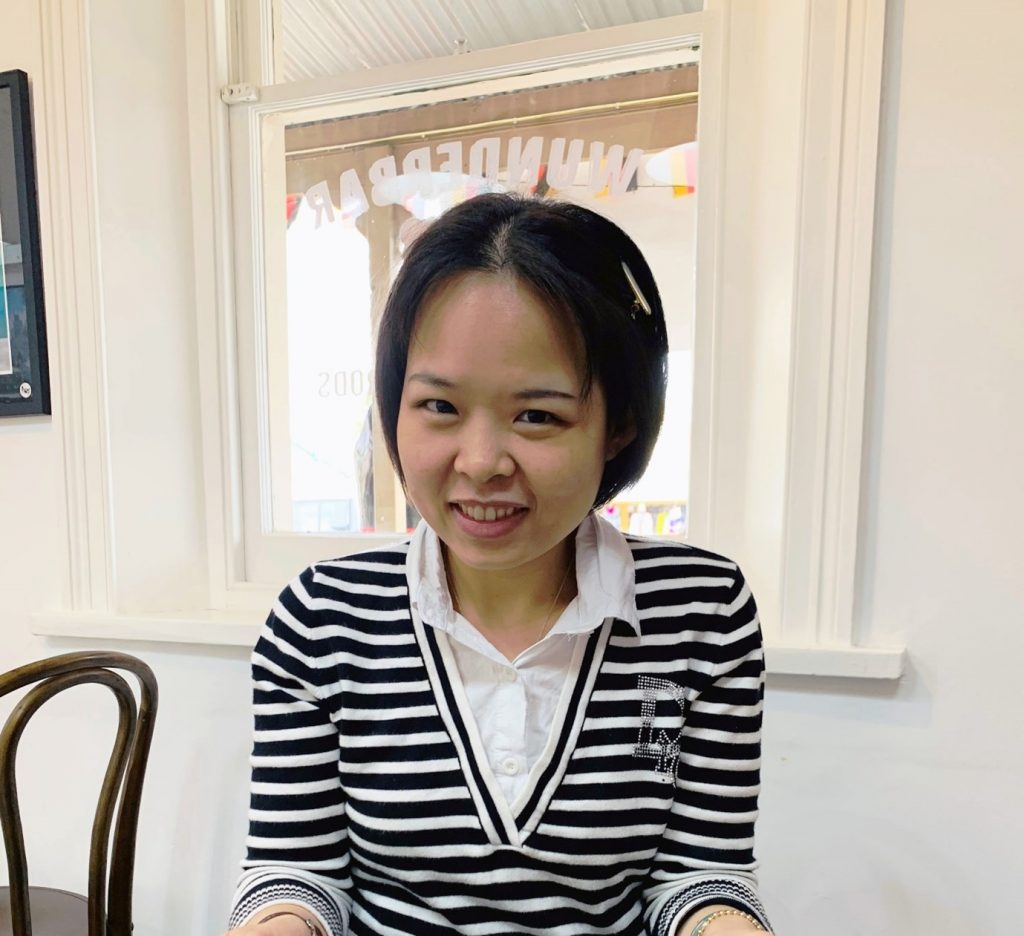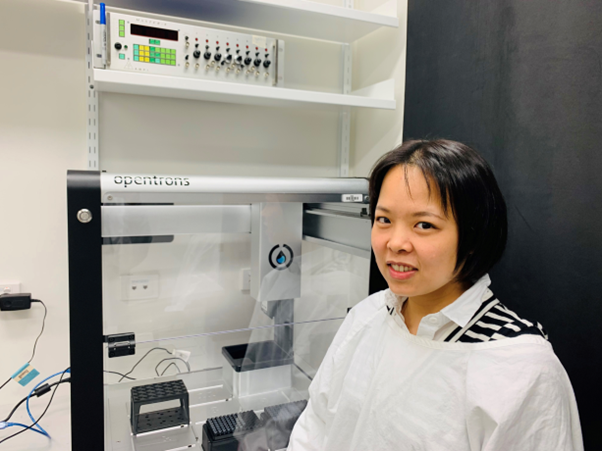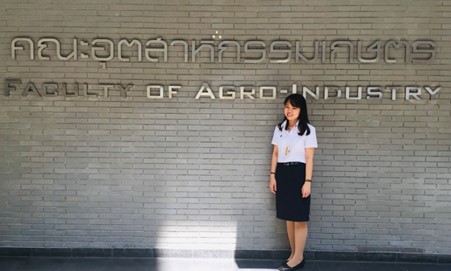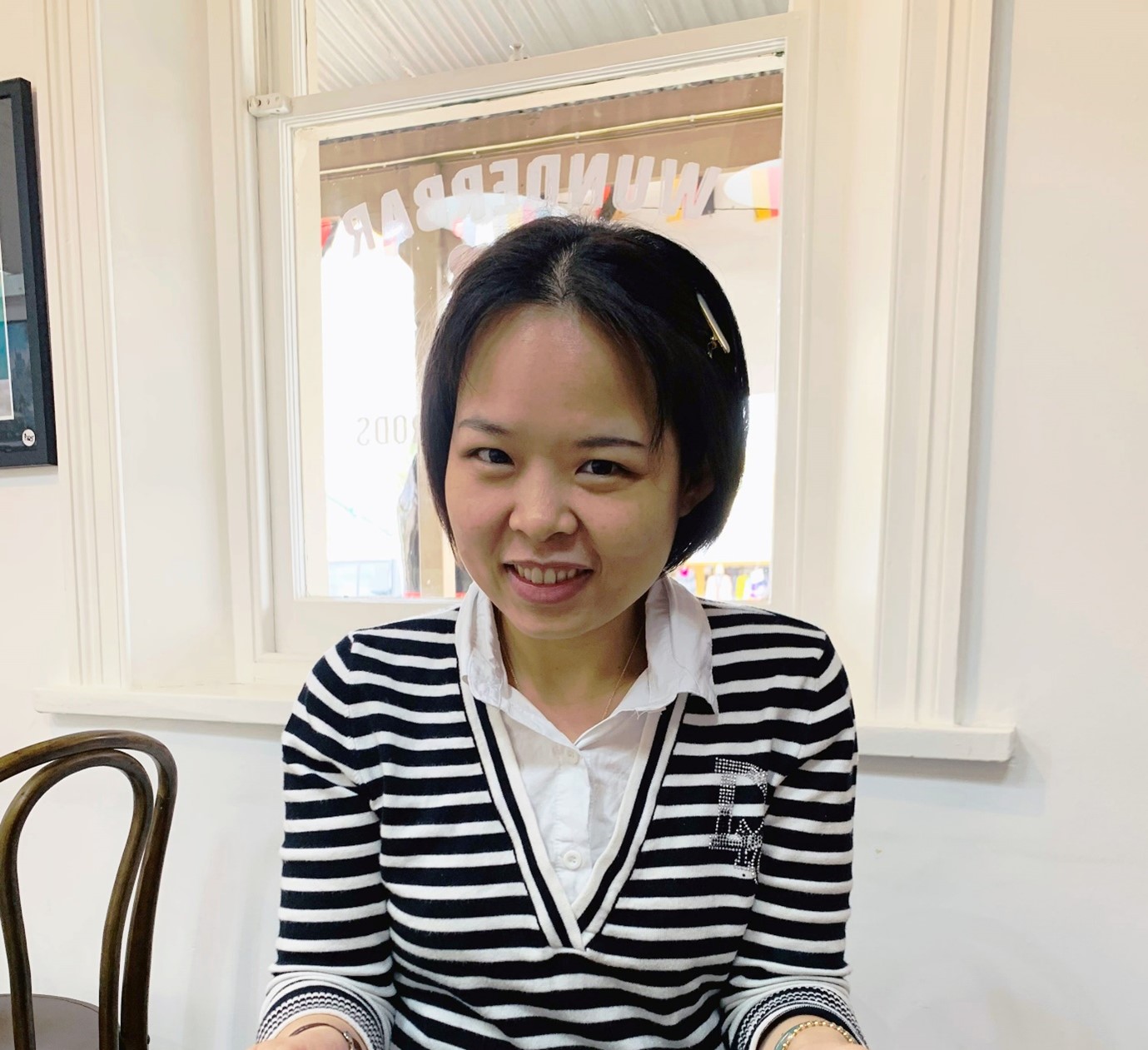By Vina Putra
Nga is a Scientia PhD Candidate at the School of Biotechnology and Biomolecular Sciences (BABS), UNSW. Her research focuses on engineering proteins with metal ions to create nanosized wires that can be used to provide electroconductivity and to functionalise materials for biomedical and energy applications. Nga is passionate about biomaterials research, in promoting the work of women and providing support for women in science.

For Nga Lam, spending time in the lab and being constantly fascinated by small findings from her experiments are the key to thrive in science. As a PhD candidate, Nga studies a specific type of protein that carries metal ions, called metalloproteins. She engineers, synthesises and characterises protein for the spatial organisation of metalloproteins to create nanowires. Ultimately, she aims to use the nanowires to functionalise materials where electroconductivity is desired such as in neural tissue-engineered construct or to provide source of bioenergy, the bio-battery.
Nga’s protein nanowire relies on the electron transfer through metal ions that are present in the centre of metalloproteins. When these proteins are spatially organised in series, these metal ions could generate electronically conductive signals as electrons go through the system from one end to the other. “It is exciting to be able to see the electrons travel through my protein nanowire”, Nga explained in awe. This could be the first step to revolutionize electronic devices by using biological system.
But how do we arrange the proteins in such a way that they can exhibit electroconductivity? Nga’s work starts all the way from designing the gene and inserting it into bacteria to sufficiently produce the desired metalloproteins. Synthesising metalloproteins in bacterial cells is challenging, therefore, Nga has to optimise conditions for the expression of proteins with different metal ions such as heme, Iron-sulfur (Fe-S) or copper. She then aligns metalloproteins along protein filaments and engineers the terminal site of nanowires to be able to incorporate them into enzymes (molecules that can catalyse biochemical reactions); one kind which serves as electron donor and the other as electron acceptor. “This way catalytic reactions of enzymes can drive electrons hopping from terminus to the opposite site without the need to apply external voltage. It’s a source of energy from biocatalysis”.

Now, three years into her PhD, Nga looks back through her journey in science and shares with us what she has learned from her experience as a female scientist.
Nga grew up in the centre of Mekong delta, Can Tho city, Vietnam. She started off her journey in science as she pursued a bachelor program in advanced biotechnology in Can Tho University, Vietnam, with a joined curriculum from Michigan State University. Her passion for science grew bigger as soon after completing her bachelor studies, she worked in the research and development team in a Japanese-originated baseball glove company called Trion. She studies various types of feathers and their mechanical properties to create baseball gloves with specific functions. It is during this work in developing materials for baseball gloves that inspired her to further her career as a biomaterials scientist. She then moved to Thailand and pursued a master’s degree by research at Kasetsart University, where she studied cellulose from agricultural waste such as sugarcane bagasse for tissue engineering scaffolds. Nga’s master research revolved around cellulose nanoparticles and developing ways to improve the functionality of materials.
After graduating from her master’s studies, Nga became a research assistant in the same group where she completed her master’s research. During this time, her career in science really took off as she had the opportunity to explore and incorporate bioactive materials. In particular, she developed methods to produce and incorporate hydroxyapatite (HA) as a bioactive component in the nanocellulose scaffold. Her recent publication reports the novel method for homogenisation of HA using cellulose nanocrystals, which promotes osteoblast (bone cells) proliferation and differentiation or specialisation. Nga also gained leadership experience as she worked with honours students in the lab at Kasetsart in utilising nanocellulose from plants and bacteria, in which she tested her method of functionalisation with HA for tissue engineering. Her work resulted in 11 publications within the span of 4 years. With years of experience in biomaterials engineering, she came to learn that the lack of recognition (protein) for biological cells has been the challenge in the functionality of materials, and this became her motivation to work on protein-functionalised biomaterials.

As a woman in Science, Nga opened up about the challenges that she encountered throughout her journey in research while living in different countries. One of the biggest challenges for her was as she shared, “There would always be people or situations that would try to stop you from achieving your goals or be unsupportive”. Her advice for women facing obstacles is “to keep doing it for science, show the highest commitment and love in the science you’re doing, and others won’t matter”.
As a UNSW Woman in Science Champion, Nga visions herself to hone her leadership skills in the program to one day become a research leader who empowers and supports women in getting access to the knowledge and training they seek. She also looks forward to taking part in promoting women’s achievement in science and hopes that the next generation of women scientists strongly cultivate their love for science – love is the greatest motivator.
Check out Nga’s scientific work here and follow her on twitter @Nga_TLam

